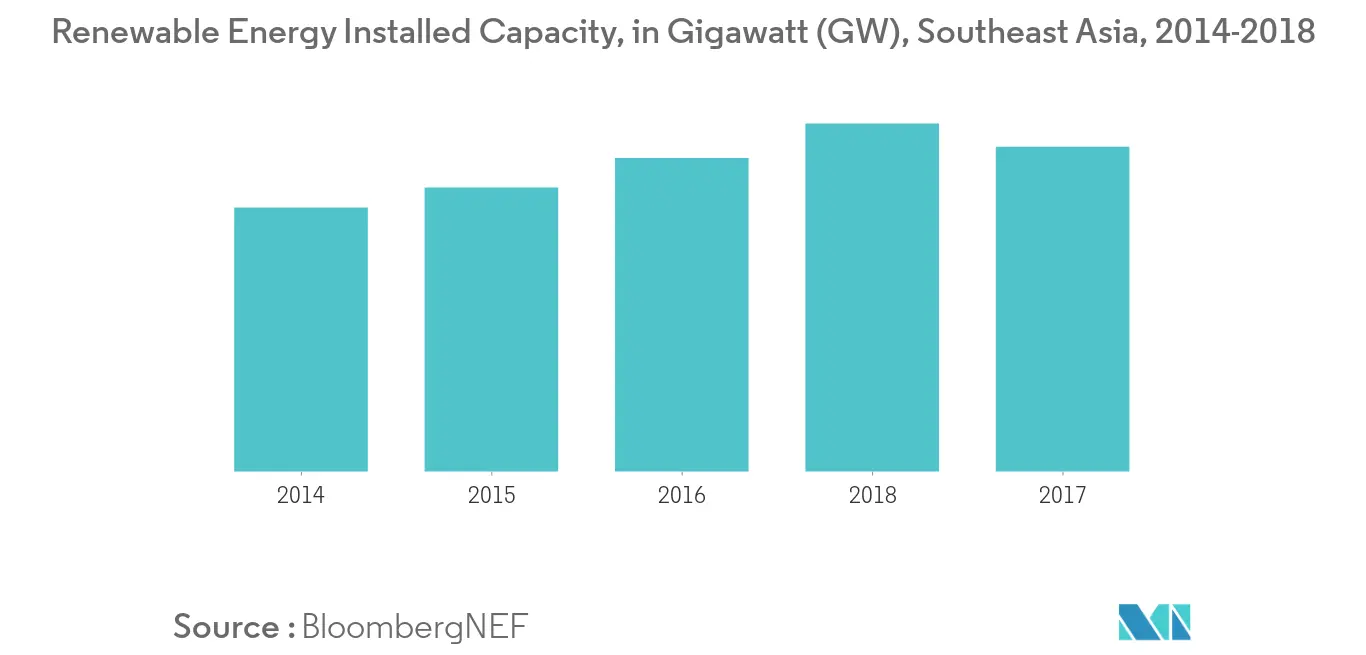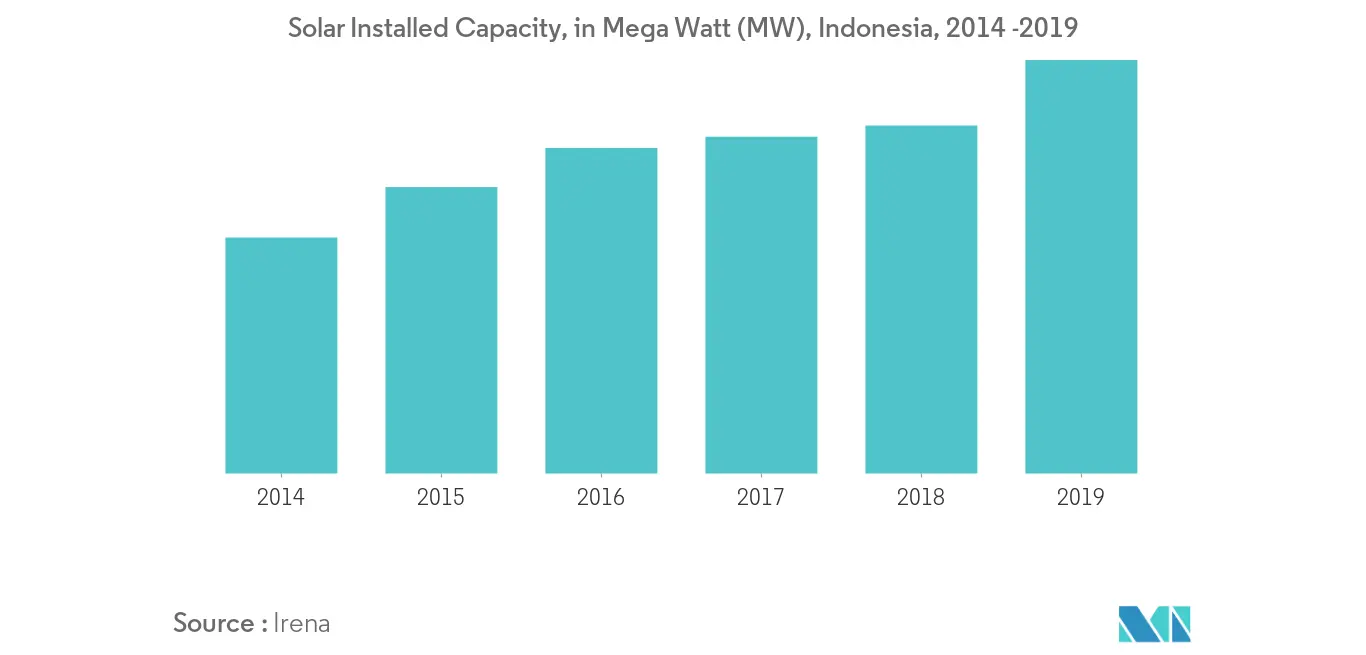Market Trends of South East Asia Power Industry
This section covers the major market trends shaping the South East Asia Power Market according to our research experts:
Renewable Energy Sector to be the Fastest-Growing Segment
- Renewable energy installed capacity in Southeast Asia, increased by 7.15%, to 68.24 Gigawatt, in 2018 from 63.68 Gigawatt, in 2017. The installed capacity is expected to increase in the forecast period and act as a driver to the market.
- In 2019, with nearly no solar capacity, Cambodia mooted an auction process that attracted 26 bidders, including international companies, and registered a record low bid for the Southeast Asian region at $38.77/MWh. With such a response to the auction, renewable energy is expected to increase in the forecast.
- In May 2020, Malaysia's Ministry of Energy and Natural Resources has announced the fourth round of the nation's Large-Scale Solar (LSS) procurement scheme. It has a tender to increase the installed capacity by 1 Gigawatt of electricity. The successful applicants are expected to have until the end of 2023 to get their plants connected to the grid.
- In Vietnam, the preferential taxation policy offers an income tax rate of 10% for 15 years to all renewable energy technologies, compared to the statutory rate of 20%. The tax incentives are for corporations involved in environmental protection activities, which include renewable energy generation. Preferential taxation is expected to lead to an increase in the renewable power market.
- Therefore, it is likely that renewable energy could be the fastest-growing segment in the Southeast Asia power market due to their competitive costs of construction and operating, governmental support, and the continued investment in the sector.

Indonesia to Dominate the Market
- Indonesia is the most populous nation and the highest producer of electricity in the region. Indonesia also has a broad industrial and manufacturing base, which has created further the demand for electricity.
- The Ministry of Energy and Mineral Resources (MEMR) of Indonesia released the 10-year electricity plan in March 2018. MEMR expects 56 GW of new power capacity to be built over the years. According to the electricity plan, coal is expected to continue to play a significant role in the power sector, with the private sector expected to add 57% of the total new capacity.
- Solar energy installed capacity in Indonesia was 198 Megawatts, in 2019 compared to 62 Megawatts, in 2018. The solar installed capacity is expected to further increase in the forecast period due to the increase in the investments, as the government wishes to increase the renewable energy to 23% of the mix and aid the southeast Asia power market.
- The government plans to meet its electrification goals through distributed renewable energy with the aim to achieve full access to power by 2024, from a 2018 estimate of around 98.5%. Remote islands are expected to be electrified through grid expansion and off-grid small-scale solar installations combined with either storage facilities or diesel power.
- In 2017, the expansion of the Tanjung Jati B coal-fired power plant started. After completion, the plant is expected to have a total installed capacity of 4640 megawatts (MW). The project is being executed by Bhumi Jati Power Company, an independent power producer (IPP), on a build-own-operate-transfer (BOOT) basis. The expansion project is expected to be completed by 2021 and is expected to increase the country's thermal power generation capacity. More thermal power projects are likely to be constructed in the forecast period, thereby aiding the growth of the market.
- Hence, Indonesia is expected to dominate the market due to its large electricity consumption and massive investments in the country's power projects.

